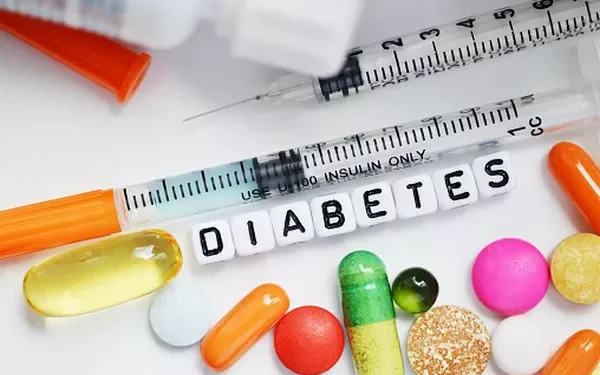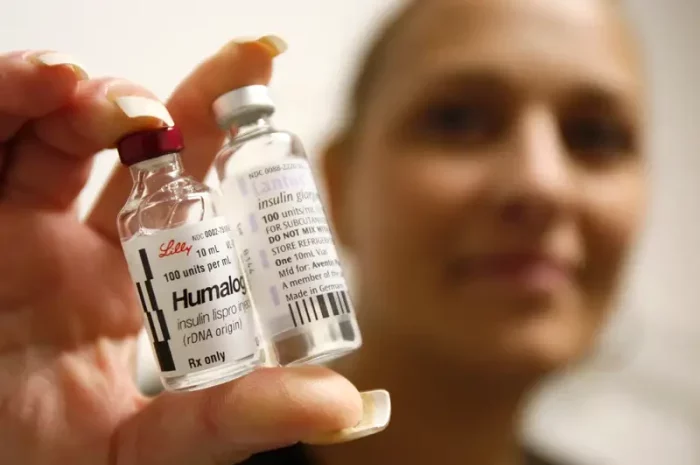Type 2 diabetes is one of the most prevalent chronic conditions worldwide, affecting millions of people. This metabolic disorder is characterized by high blood glucose levels, resulting from either insulin resistance, impaired insulin production, or a combination of both. As a diabetes doctor with expertise in type 2 diabetes, I can attest that understanding the causes of type 2 diabetes symptoms is crucial in managing the condition effectively and preventing complications. This article will delve into the various factors that lead to the onset of type 2 diabetes symptoms, the physiological mechanisms involved, and the key contributing risk factors.
The Basics of Type 2 Diabetes
Type 2 diabetes occurs when the body either doesn’t produce enough insulin or becomes resistant to insulin, a hormone responsible for helping cells absorb glucose from the bloodstream for energy. Without sufficient insulin function, glucose remains in the blood, leading to hyperglycemia (high blood sugar). Over time, this persistent elevation in blood glucose levels causes various symptoms and can lead to severe complications if left untreated.
Insulin Resistance: A Core Cause of Type 2 Diabetes Symptoms
Insulin resistance is one of the primary mechanisms responsible for the development of type 2 diabetes. In people with insulin resistance, the body’s cells, particularly muscle, fat, and liver cells, become less responsive to the effects of insulin. As a result, the body requires more insulin to move glucose from the bloodstream into cells.
When the pancreas, the organ responsible for producing insulin, tries to compensate for this resistance by producing more insulin, it may eventually become overburdened. Over time, the pancreas may not be able to keep up with the body’s increased insulin demands, leading to a reduction in insulin production. This combination of insulin resistance and impaired insulin production causes high blood sugar levels, triggering the symptoms associated with type 2 diabetes.
The Causes of Type 2 Diabetes Symptoms
1. Elevated Blood Sugar Levels (Hyperglycemia)
One of the hallmark features of type 2 diabetes is elevated blood sugar levels, also known as hyperglycemia. Hyperglycemia is directly responsible for many of the symptoms associated with type 2 diabetes. When glucose accumulates in the bloodstream instead of being absorbed by the cells, it begins to cause damage to tissues and organs, leading to various symptoms.
Frequent urination (polyuria): High blood sugar levels cause the kidneys to work harder to filter and absorb the excess glucose. When the kidneys can’t keep up, excess glucose is excreted in the urine, which leads to increased urination. This frequent urination is one of the most common symptoms of type 2 diabetes.
Increased thirst (polydipsia): As the body loses more fluid through frequent urination, dehydration occurs. This triggers an increase in thirst as the body attempts to replenish lost fluids. Thus, individuals with high blood sugar often experience excessive thirst.
Blurred vision: Elevated blood sugar levels can cause the lenses of the eyes to swell, leading to temporary changes in vision. Blurred vision is a common symptom that many people with type 2 diabetes experience, especially when blood sugar levels fluctuate significantly.
2. Insulin Deficiency
As type 2 diabetes progresses, the pancreas may begin to lose its ability to produce sufficient amounts of insulin, resulting in insulin deficiency. Without enough insulin, glucose cannot efficiently enter the cells, further contributing to hyperglycemia and the symptoms of diabetes.
Fatigue: Cells rely on glucose for energy, and when glucose cannot be absorbed due to insulin deficiency, energy levels drop. This leads to persistent fatigue, which is a common symptom of type 2 diabetes. People with diabetes often feel unusually tired, even after getting adequate sleep.
Slow healing of wounds: Insulin deficiency and high blood sugar levels can impair the body’s ability to heal wounds. Poor circulation and damage to blood vessels caused by prolonged hyperglycemia reduce the supply of oxygen and nutrients to tissues, leading to delayed wound healing.
3. Excessive Glucose Production by the Liver
In addition to insulin resistance, people with type 2 diabetes often experience excessive glucose production by the liver. Normally, the liver helps regulate blood sugar by storing glucose and releasing it when needed. However, in people with diabetes, the liver may produce and release more glucose than necessary, further contributing to high blood sugar levels and associated symptoms.
Unexplained weight loss: Despite an increase in appetite, some individuals with uncontrolled type 2 diabetes may experience unexplained weight loss. This is because, without enough insulin, the body cannot use glucose for energy and starts breaking down fat and muscle instead.
4. Excessive Fat Storage
Obesity, particularly the accumulation of visceral fat around the abdomen, is a major risk factor for developing insulin resistance and type 2 diabetes. Excess fat tissue contributes to inflammation and hormonal imbalances that worsen insulin resistance and impair the body’s ability to regulate blood sugar.
Increased hunger (polyphagia): Because the body’s cells are unable to use glucose efficiently for energy, the brain perceives this as a lack of fuel. This triggers an increase in hunger, even though blood sugar levels may already be high.
Darkened areas of skin (acanthosis nigricans): Insulin resistance can also manifest in the skin. One visible symptom of insulin resistance is acanthosis nigricans, a condition characterized by darkened, velvety patches of skin, often found on the neck, armpits, and groin.
Risk Factors Leading to Type 2 Diabetes Symptoms
Several factors increase the likelihood of developing insulin resistance and, consequently, type 2 diabetes. While genetic predisposition plays a significant role, lifestyle factors are often the primary contributors.
1. Obesity and Sedentary Lifestyle
Obesity, particularly central obesity (fat around the abdomen), is strongly associated with insulin resistance. Excess fat, particularly visceral fat, produces pro-inflammatory substances that interfere with insulin’s ability to regulate blood sugar effectively. This leads to elevated blood sugar levels and the symptoms associated with type 2 diabetes.
A sedentary lifestyle compounds the issue. Physical inactivity reduces the body’s ability to use glucose for energy, thereby worsening insulin resistance. Exercise, on the other hand, improves insulin sensitivity, allowing cells to absorb glucose more efficiently and reducing blood sugar levels.
2. Genetic Factors and Family History
Genetics also play a significant role in the development of type 2 diabetes. Individuals with a family history of diabetes are more likely to develop the condition themselves. Inherited genes may predispose a person to insulin resistance, obesity, or a decline in insulin production, all of which contribute to the onset of diabetes symptoms.
3. Poor Diet
A diet high in refined carbohydrates, added sugars, and unhealthy fats increases the risk of developing type 2 diabetes. These foods cause rapid spikes in blood sugar and insulin levels, leading to insulin resistance over time. Diets lacking in fiber, healthy fats, and protein can also exacerbate blood sugar imbalances, contributing to the symptoms of diabetes.
4. Age
The risk of developing type 2 diabetes increases with age, particularly after age 45. As people age, they tend to lose muscle mass and gain fat, which can worsen insulin resistance. Additionally, the pancreas may produce less insulin as people get older, contributing to higher blood sugar levels.
5. Ethnicity
Certain ethnic groups are more susceptible to developing type 2 diabetes than others. For instance, people of African American, Hispanic/Latino, Native American, Asian American, and Pacific Islander descent are at higher risk of developing the condition. Genetic and environmental factors both contribute to this increased susceptibility.
6. Hormonal Disorders
Certain hormonal conditions can lead to insulin resistance and type 2 diabetes. For example, polycystic ovary syndrome (PCOS), a hormonal disorder in women, is associated with insulin resistance and an increased risk of developing type 2 diabetes. Additionally, conditions such as Cushing’s syndrome, characterized by excess cortisol (the stress hormone), can interfere with insulin function and lead to hyperglycemia.
Managing Type 2 Diabetes Symptoms
Understanding what causes type 2 diabetes symptoms is the first step toward effective management. Lifestyle modifications, such as adopting a balanced diet, engaging in regular physical activity, and losing weight, can significantly improve insulin sensitivity and reduce blood sugar levels.
In addition to lifestyle changes, many individuals with type 2 diabetes require medications or insulin therapy to control their blood sugar levels. Medications such as metformin help improve insulin sensitivity, while insulin therapy may be necessary for those who cannot produce enough insulin on their own.
See also: What Sugar Should Diabetics Use?
Conclusion
Type 2 diabetes is a complex condition caused by a combination of insulin resistance, impaired insulin production, and excessive glucose production by the liver. The symptoms of type 2 diabetes, such as frequent urination, increased thirst, fatigue, and blurred vision, result from elevated blood sugar levels. Risk factors such as obesity, a sedentary lifestyle, poor diet, and genetic predisposition contribute to the development of the condition.
By understanding the underlying causes of type 2 diabetes symptoms, individuals can take proactive steps to manage their condition and reduce the risk of complications. A comprehensive approach that includes lifestyle changes, regular monitoring of blood sugar levels, and adherence to prescribed medications can help individuals with type 2 diabetes lead healthier lives and minimize the impact of the disease on their overall well-being.
Related topics:
What Are the 5 Major Complications of Diabetes?



























